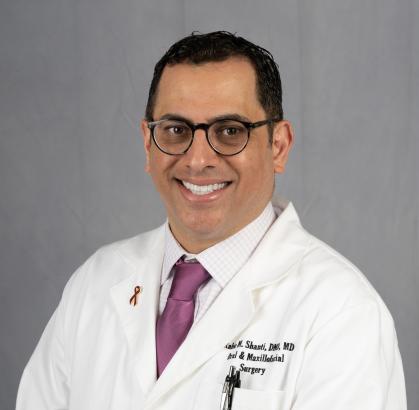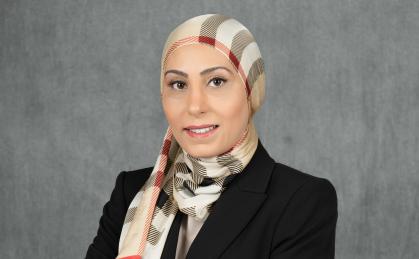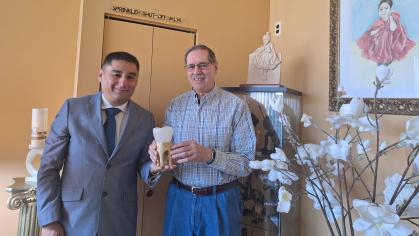Like It Never Happened
Daniel McDermott sat anxiously, awaiting PET scan results. Earlier that month, he had been diagnosed with oral cancer. His doctor Rabie M. Shanti, associate professor of oral and maxillofacial surgery, walked into the room and immediately said: “No cancer anywhere else in your body.” McDermott, a writer and teacher from New Jersey, recalls that moment vividly—not just for the relief, but for Shanti’s directness.
“He didn’t say ‘good morning’ or ‘how are you,’ because he knew I was reeling with anxiety waiting for the result,” he said. “That was so intelligent.”

McDermott first noticed soreness and inflammation in his gum around Thanksgiving of 2022. His dentist referred him to several specialists, eventually leading him to Shanti at Rutgers School of Dental Medicine’s (RSDM) Faculty Practice. He had oral squamous cell carcinoma—a disease often misunderstood to be exclusive to smokers, but around one-in-four, like McDermott, are non-smokers.
A multidisciplinary team across Rutgers Health—surgeons, oncologists, nutritionists—crafted McDermott’s treatment. “Everyone’s pro-patient,” said Shanti, whose empathy is rooted in personal experience. “I've unfortunately had to go through this journey of cancer with my parents,” he said. “Knowing what patients are going through allowed me to see how impactful the smallest things can be.”
The key part of the treatment was surgery. But before the operation, RSDM Associate Professor of Restorative Dentistry Heba Elkassaby scanned McDermott’s teeth and bite for post-op implants; because during surgery, Shanti removed the cancer, extracted compromised teeth, and placed implants. “I'm proud to say about 90 to 95 percent of our patients with oral cancer can have dental implants placed at the time of their surgery,” said Shanti, explaining that though not a common practice, it’s a much safer process with a lower chance of infection and failure. “It also reduces the amount of time patients go without teeth.” Richard Chan Woo Park, professor of otolaryngology at Rutgers New Jersey Medical School, then harvested a bone graft from McDermott’s leg (fibula), using 3D modeling for his jaw reconstruction. “3D rendering is advanced, and for the last 10 years, we've been doing this,” he said. “I was the first person to do it at Rutgers.”

Post-surgery, McDermott underwent radiation therapy with Rutgers Health radiation oncologist Sung Kim at the Cancer Institute of New Jersey. In a second surgery, Shanti uncovered implants and removed excess tissue, aided by Elkassaby’s surgical guide. She later crafted a temporary prosthesis at the school’s Georges E. Sara Digital Dentistry Center, a state-of-the-art facility with 3D printers and laboratory scanners, which allowed her to adjust the prosthesis as McDermott’s tissue changed as he healed. “These cases are extremely challenging,” Elkassaby noted and emphasized the importance of teamwork. “Our dental assistants, manager, biller—everyone plays a role. Without this interdisciplinary collaboration, including the dental lab, it wouldn’t be possible.” The psychological toll of treatment is also significant, but so is the transformation. “You can feel the emotional shift in patients once they receive their final prosthesis,” she said.
McDermott agrees. “Without all my teeth, I had a serious lisp. As a writer, I do public readings, I teach—I stand in front of people and talk for a living. I was really worried.” Now, two years after surgery, McDermott has all his prosthetic work done and is cancer-free.
“I don’t think you can look at me and tell I had surgery,” he said. “I feel normal again.”



